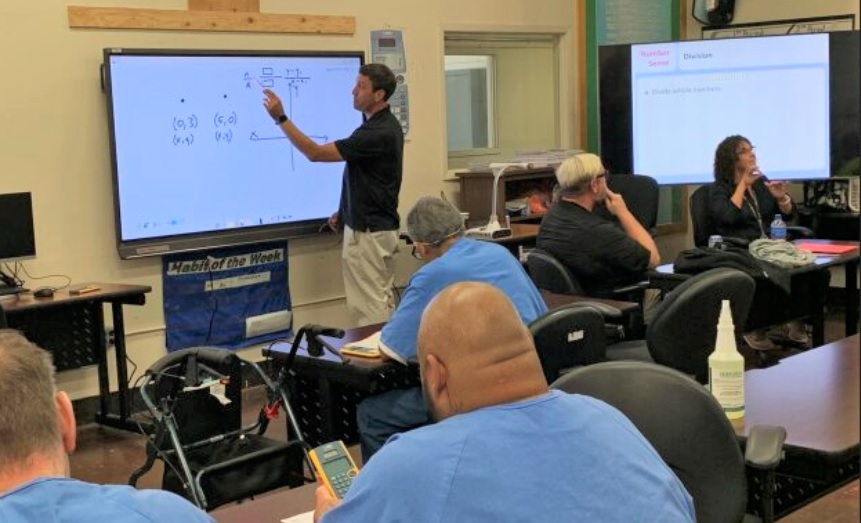When CDCR students head back to school this fall, they will see interactive technology transforming classrooms.
Large display touch screens are now front and center in all classrooms, allowing new ways to engage students.
Immersive activities meant to engage students
In basic literacy classes, for instance, viewboards bring lessons to life with immersive activities.
Basic literacy is supported through interactive vocabulary and reading lessons with text-to-speech and screen-capture capabilities. This allows content to be reviewed outside of the classroom.
Students can contribute notes to classroom presentations, participate in guided activities such as educational games and view real-world examples of the content. These hands-on functions captivates the learner and promotes understanding and retainment of language skills.
“The viewboard technology allows us to integrate technology into instruction in a seamless and interactive manner that truly makes the most of instructional time,” said Dr. R. Lynne Ruvalcaba, Supervisor of correctional education programs for CDCR’s Office of Correctional Education (OCE). “Teachers can engage with students with lessons that present material in ways that make sense, leveraging the principles of instructing adult learners to create a positive, encouraging, and hands-on learning process.”
From basic education to college
OCE serves students throughout the educational spectrum – from basic literacy instruction, to high school diploma acquisition to college courses. The ViewSonic Viewboards is the latest way CDCR is working to improve the educational experience with immersive learning.
The boards are multifunctional. Students can display from their own computers in coordination with the instructor. The student is able to contribute notes, highlight information and annotate.
The boards have built-in speakers and a microphone that capture sound up to about 20 feet away and instantly transcribe dialogue across the screen. This is an especially helpful feature for students with ADA needs.
Additionally, the screen capture feature can record what is being done on the screen as well as the accompanying sound. This allows teachers to save files and upload them to central learning management systems. Soon, these systems will be available for students to review on their laptops outside of class.
Finally, the boards will be useful in future endeavors where the Department plans to use cameras to have education professionals outside of institution walls present to teachers and students. This technology will truly open up a whole new world of learning possibilities.
Interactive technology in the classrooms benefits students, staff
These boards will be used in conjunction with existing software to offer an array of interactive lesson plans. They can also be used with software from the vendor which has an array of additional capabilities.
All institutions will have several Viewboards installed by mid-September while instructors are being trained as the new tool is deployed at their institution.
Career Technical Education instructors will have the boards mounted on carts so they can be positioned throughout their shops as needed. Meanwhile, most academic classrooms will have the system mounted on walls when possible.
Story by Alia Cruz, Information Officer, Office of Public and Employee Communications
Story assistance provided by the Office of Correctional Education
Read more rehabilitation stories.
Follow CDCR on YouTube, Facebook, X (formerly Twitter). Listen to the CDCR Unlocked podcast.
